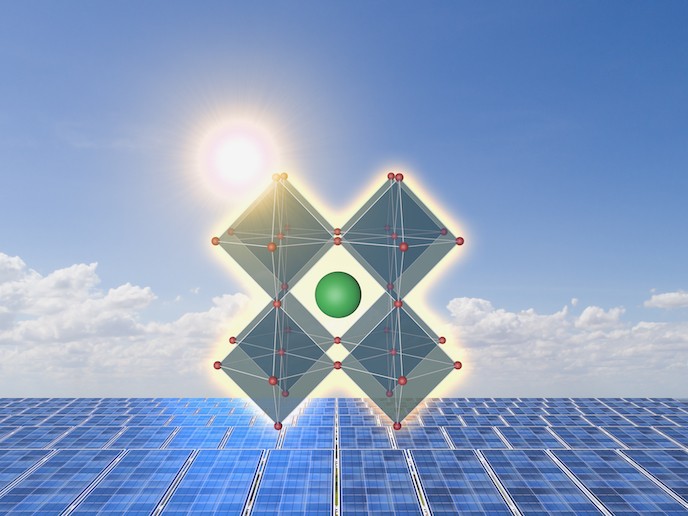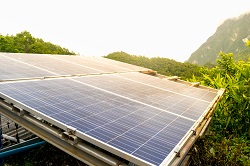Innovative approach to solar cell structure breaks records for efficiency
Sunlight-to-electricity efficiencies have gone from 3.8 % to 25 % for small area perovskite devices (under 1 cm2) – useful as proof of concept but not for powering anything. Useful, module-sized efficiencies are lagging behind, at only 16.1 %. Commercially available silicon panels are at about 20 % efficiency, with the best small area devices at 26 %.
Chasing efficiencies
“Perovskites have the potential to be much cheaper and also to open up new markets for lightweight, flexible solar power,” says Giles Eperon, chief investigator on the EU-funded Crystal Tandem Solar project and co-founder and chief science officer of project host, Swift Solar. But, as he goes on to explain, to compete with silicon the module efficiency needs to be similar or higher than that 20 %. There is a limit on the efficiency that can be practically attained using single junction perovskite solar cells (PSCs), which consist of just one layer of light-absorbing semiconductor. Practically, this stands at about 27 %. “Current research is now getting close to that, at about 25 %, and progress is becoming harder as we get close to the limit, so research progress is slowing. The National Renewable Energy Laboratory efficiency chart depicts that clearly,” says Eperon. The Crystal Tandem Solar project attempted to go beyond the limit, by using two layers of light-absorbing semiconductor in a ‘tandem’ structure. As Eperon explains: “This bumps up the practical efficiency limit much higher and will enable the efficiencies that can compete with silicon panels.” The original plan was to use silicon-perovskite tandems in the project. However, a breakthrough was made just before the start of the project where it was shown that tandems made with two layers of perovskite could be very efficient. “We then switched to work on this exciting technology as it offered the potential for an even cheaper solar cell that would also retain the advantages of perovskites – mainly being flexible and lightweight,” says Eperon. This meant new challenges. “With silicon, we could just immerse the wafer in the solution the perovskite is grown from. However, doing this with two perovskites, the first perovskite would dissolve when exposed to the solution.” To get around this, Eperon, who conducted his research with the support of the EU’s Marie Skłodowska-Curie Actions programme, focused mainly on developing a robust, protective interlayer. “Achieving this allowed us to process one perovskite on top of the other with no damage. This was comprised of layers of oxides deposited with atomic layer deposition and sputter coating,” explains Eperon. By making the perovskite layer single-crystalline the project aimed to totally eliminate grain boundary energy losses to increase efficiencies. They didn’t quite manage that, but Eperon was able to grow shape-controlled large, thin, plate-like crystals using variations on nanocrystal synthesis. He developed the interlayer to enable growth on top of the first substrate. The work has led directly to new world records for perovskite-perovskite tandem devices. “Building on this work, after completion of the project, I was offered a job at the National Renewable Energy Lab in Colorado, United States, to continue this line of research. This has led to more breakthroughs and another record efficiency for perovskite-perovskite tandems. “During the project, along with collaborators I co-founded a start-up, Swift Solar, that aims to commercialise the perovskite-perovskite tandem technology that I worked on in the project. As the need grows ever greater to find clean energy, this technology is just gaining momentum.”
Keywords
Crystal Tandem Solar, perovskite solar cells, Swift Solar, perovskite-perovskite tandem devices







